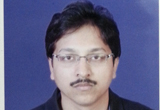 The second Bottle Neck Analysis (BNA) workshop for maternal and newborn health interventions was held in Hyderabad on 6 and 7 of August 2013. It was conducted by the National Rural Health Mission, Andhra Pradesh, and supported by the Department of Health, Medical, and Family Welfare (government of Andhra Pradesh), and the UNICEF field office for Andhra Pradesh and Karnataka states. The consultative workshop had the purpose of finding out the bottlenecks with existing maternal and newborn health interventions and solutions to them. It was a successor to the first BNA workshop in Jaipur (Rajasthan). The participants included experts working for maternal and newborn health, pediatricians, neonatologists, and gynaecologists from medical colleges, private hospitals, and nursing homes, project officers from UNICEF and the Maternal and Child Health Integrated Programme (MCHIP), communication specialists, directors, health commissioners, and epidemiologists.
The second Bottle Neck Analysis (BNA) workshop for maternal and newborn health interventions was held in Hyderabad on 6 and 7 of August 2013. It was conducted by the National Rural Health Mission, Andhra Pradesh, and supported by the Department of Health, Medical, and Family Welfare (government of Andhra Pradesh), and the UNICEF field office for Andhra Pradesh and Karnataka states. The consultative workshop had the purpose of finding out the bottlenecks with existing maternal and newborn health interventions and solutions to them. It was a successor to the first BNA workshop in Jaipur (Rajasthan). The participants included experts working for maternal and newborn health, pediatricians, neonatologists, and gynaecologists from medical colleges, private hospitals, and nursing homes, project officers from UNICEF and the Maternal and Child Health Integrated Programme (MCHIP), communication specialists, directors, health commissioners, and epidemiologists.
The workshop started off with three strong presentations—the Global Newborn Action Plan (GNAP), the Indian Newborn Action Plan (INAP), and Newborn Care in the state of Andhra Pradesh. This was then followed by few technical presentations including: ”Evidence for Social and Behavioral Change for Maternal, Newborn, and Child Health.” The presentations revealed that there is a need for a communication strategy to be adopted in the state. Information about how consumers communicate was captured. Television was found to be the most common media for communication followed by newspapers. Of the TV watchers most people watched TV series (90%) followed by movies. The most common time for watching TV was between 6 pm and 9 pm. People had access to mobiles in 86% of cases, which they used mostly for phone calls rather than messaging. Teachers were the most trusted leaders, followed by private doctors and friends. The Anganwadi centre was the most common place of access to any government health scheme.
Six focus groups worked on topics, namely: health systems applicable to newborn, maternal health, essential newborn care, and resuscitation, community based postnatal care, management of preterm babies and low birth weight babies, and treatment of severe infections and inpatient supportive care for sick and small newborns. Facilitators and participants with expertise in the corresponding area were assigned to the groups. Each focus group was assigned a core area, which needed critical analysis to establish if it was a bottleneck or not. Solutions were suggested, and scores were assigned based on its status in Andhra Pradesh. The final score from all the core areas had to be finally compiled to identify if it was a bottleneck for the state. The most common bottlenecks for all themes were mostly found to be in the core areas of health service delivery, and review and monitoring of programmes. A shortage of healthcare workers was found to be a major culprit for these bottlenecks. These bottlenecks were compounded by unavailability of a valid health management and information system. It was suggested that the state drug corporation was a hindrance to the timely distribution of drugs in the state. The “Marku” programme was identified as one of the key ways of facilitating the communication strategy in Andhra Pradesh at present.
The next day the groups put the finishing touches to their group work and prepared their presentation followed by a quick debriefing. The discussions focused on good solutions for the identified bottlenecks. Some of the recommended solutions included increasing the healthcare workforce by sanctioning the creation of more staff nurses and doctors posts, and appropriately distributing these new positions, establishing a regular neonatal child health review mechanism at a district level on par with that of the state, giving flexi-funds to the districts for drug and logistics management, and improving and updating some of the guidelines of national health programmes. The workshop ended with a final presentation from the organizers with all the themes with their scores and color codes at one go, enabling the house to easily identify the important bottle necks which need utmost priority.
The best thing about the workshop was the presence of all the top health administrators and the health commissioner of Andhra Pradesh for the entirety of the workshop, and it deserves appreciation. One query raised by me which remained unanswered was whether any surveys focused on finding out what proportion of neo-natal deaths have been misclassified as still-births. Or has the Indian government thought of including still birth reviews in its newly drafted guidelines for child death review? This is a puzzle yet to be solved and a research question that still needs a better answer.
Competing interest: The UNICEF Field Office for Odisha recommended me and sponsored me to participate in the workshop.
Sandeep Kumar Panigrahi is a programme coordinator in community based child health as a deputee of UNICEF.